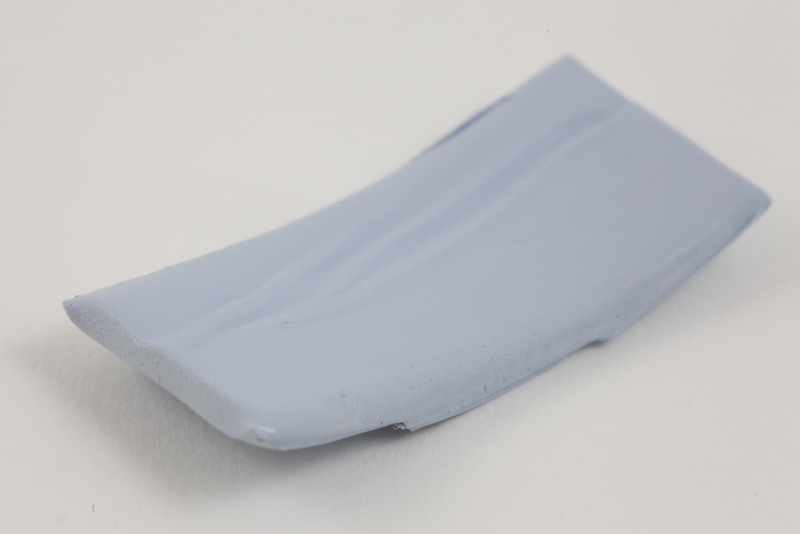Materials Up Close & Personal: BLU-TACK
22 April 2020

Following on from last week’s tour of tarmac, let’s stick (ha!) with another adhesive substance: that staple of the home office, blu-tack.
In celebrating this modest and mundane material it seems we are in good company. Artist Martin Creed’s 2001 Turner Prize-winning show famously featured Work No. 79: ‘some blu-tack kneaded, rolled into a ball and depressed against a wall’. If you look closely at the image on the link, you can see the imprint of Creed’s thumb in the powder blue blob. This is a reminder of how blu-tack gets more liquid the more we knead and warm it, eventually becoming stringy, fibrous and fragmented ‘putty in our hands’.
So why does blu-tack get blu-tackier as we handle it, and how does it stick reversibly without feeling that sticky? Structural adhesives like superglue form an irreversible bond with a surface once they have hardened. Non-reactive, pressure-sensitive adhesives on the other hand, like blu-tack and the glue on the back of a post-it note, stick to surfaces when pressure or heat are applied, but can be pulled free once that force is removed. This is because they stay rigid when left to their own devices, but flow like liquids when they are pressed onto a wall or warmed up to body temperature.
In free-flowing form, blu-tack spreads thinly and seeps into all the microscopic indents of a wall, forming a vacuum. (This is also what makes it feel stickier in your hands; the blu-tack flowing into all the tiny crevices of your skin). Once a tight seal between the blu-tack and wall has been formed, lots and lots of tiny but weak van der Waals forces are able to hold the blu-tack up. There are no strong chemical bonds holding the blu-tack and wall together, but there are strong (cohesive) forces holding the blu-tack molecules to each other, so it’s easily rolled off the wall again in one piece.
Although the exact recipe for blu-tack is a trade secret, we can work out roughly what’s in it: a combination of synthetic rubber compounds and mineral oil, along with mineral fillers and pigments. The mineral oil in blu-tack is apparently pharmaceutical grade, according to doctors who have written accounts in medical journals of trying to remove lumps of this powder blue adhesive from a variety of bodily orifices, including the bladder and urethra (don’t ask). Because blu-tack gets stringy and fragmented at body temperature but hardens when cold, medics have taken advantage of its strange physical properties by icing the blu-tack with a cold saline solution until it becomes firm enough to remove safely.
Whilst we’re on the topic of blu-tack in the body, a study in the Journal of Laryngology has shown that because of its sound and vibration damping qualities, blu-tack can be used as ‘a comfortable alternative to over-the-counter earplugs for attenuating everyday sound’. Dentists have also used blu-tack to create splints to immobilize and protect damaged teeth in emergency situations where no other dental equipment is available. On a day-to-day basis blu-tack is used by scientists of every description for holding their samples in place so they can examine them: from physicists examining the elemental makeup of emeralds to ecologists who wrap flies in blu-tack so that they can look at them under a microscope.
About our new blog series 'Materials: Up Close & Personal'
We are excited to announce a new series of Materials Library profiles. Over the next few months our Materials Librarian Sarah Wilkes will be paying homage to those silent and humble materials that we surround ourselves with daily, but that often we don’t even notice. Every week or so, she will be exploring the expansive inner lives and backstories of the surfaces, substances and stuff around us, and sharing it with our community through our blog and social media #MaterialsLibraryUpCloseAndPersonal.
We would love you to join in too! Send us a picture of one of your favourite household substances with a few words about what you’ve noticed after spending some time getting to know your material cohabitants. A collection of these little gems will go up on our website soon.